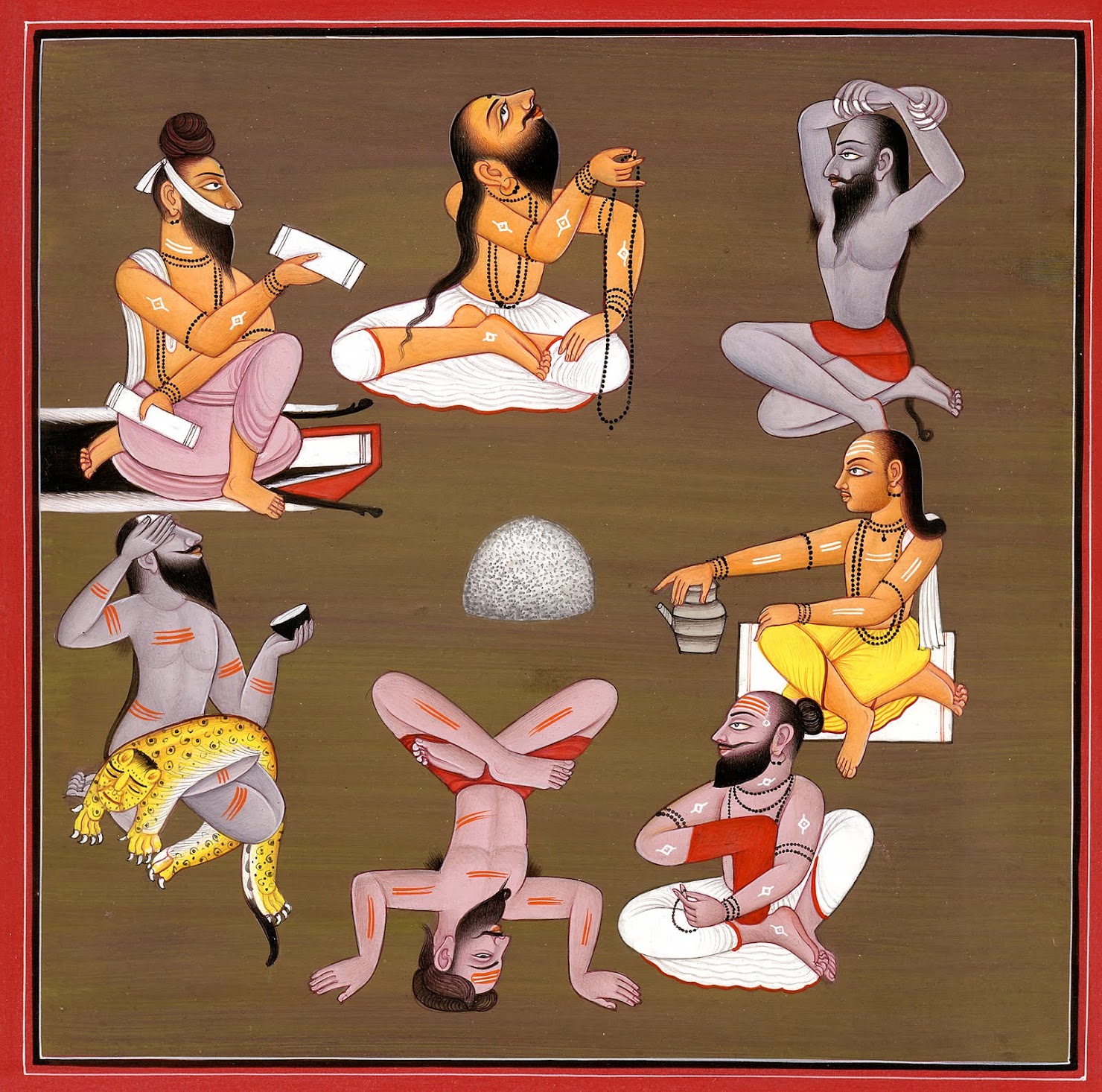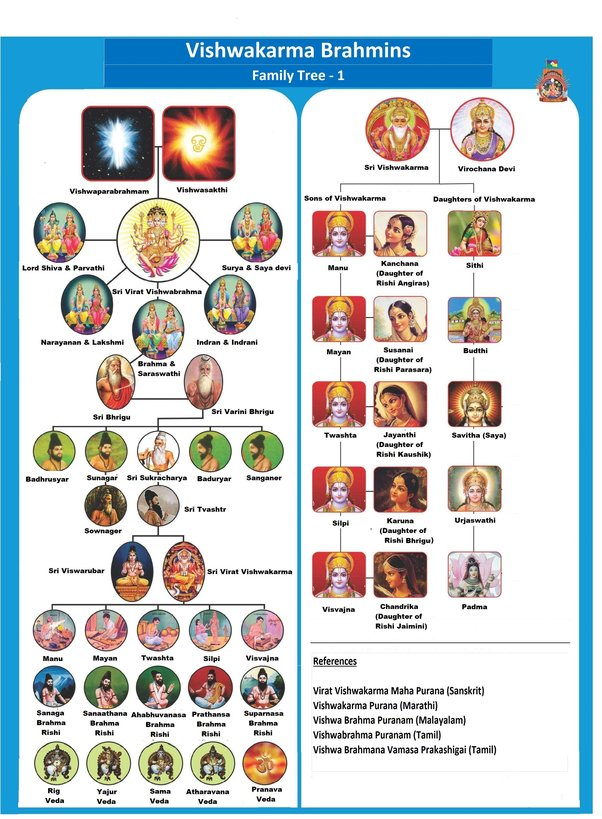Wednesday, December 6, 2023
Thursday, November 23, 2023
Saturday, November 18, 2023
Friday, November 17, 2023
Sunday, November 12, 2023
Saturday, November 11, 2023
Saturday, October 28, 2023
Friday, October 27, 2023
Tuesday, October 10, 2023
Friday, October 6, 2023
Saturday, September 30, 2023
Sunday, September 24, 2023
Saturday, September 23, 2023
Monday, July 17, 2023
trees
17. Afterwards goddess Parvati adopted a sapling of Asoka as her own son and nurtured it with waters brought by herself.
18. She invited the Seven Sages and made them perform the auspicious and consecratory rites of the tree. Then the Sages spoke to that lady of slender body:
19. “O goddess, it behoves you to fix a rule for the path pointed out by you alone. What will be the benefit in adopting trees as sons?”
20-33 The goddess said:
If a learned man digs a well in a village without water, he will rejoice in heaven as long as there is water in that well. A tank is on a par with ten wells. A lake is on a par with ten tanks. A girl is on a par with ten lakes. A sacrifice is on a par with ten girls (daughters). A son is on a par with ten sacrifi¬ ces and a tree is on a par with ten sons. This is my rule. It is invariable and it sanctifies the worlds. When the ruins are re¬ paired the benefit is considered to be twofold. Thus the origin of Gaijcsa (has been recounted).
Source
https://freeglobaluniversity.blogspot.com/search/label/Skanda
Sunday, July 16, 2023
Tuesday, July 11, 2023
Wednesday, June 21, 2023
Friday, June 16, 2023
Saturday, June 10, 2023
Monday, June 5, 2023
Monday, May 29, 2023
Sunday, May 21, 2023
Tuesday, May 9, 2023
Sapthagiri
The seven peaks are called
- Vrushabhadri – Hill named after an Asura Vrushabha who penanced on Lord Srinivasa
- Anjanadri – Hill of Lord Hanuman. it is said Hanuman's mother Anjanadevi did penance (tappassu) for 12 years.
- Neeladri – Hill of Neela Devi – It is believed that hair offered by the devotees is accepted by Neela Devi. It is because of boon granted by Lord Venkateswara to Neela Devi.
- Garudadri or Garudachalam – Hill of Garuda, the vahana of Lord Vishnu
- Seshadri or Seshachalam – Hill of Sesha, the dasa of Lord Vishnu
- Naraynadri– Hill of Narada Muni
- Venkatadri – Hill of Lord Venkateswara
Thursday, May 4, 2023
Seven Mouths
Before merging into the Bay of Bengal, the Godavari has seven mouths in total and is considered sacred by local Hindus. As per their traditional belief, the holy waters of the Godavari are said to have been brought from the head of Lord Shiva by the Rishi Gautama, and the seven branches by which it is traditionally supposed to have reached the sea are said have been made by seven great rishis known as Sapta Rishis. Thus, they are named after these seven great rishis and are named as Tulyabhāga (Tulya or Kaśyapa), Ātreya (Atri), Gautamī (Gautama), Jamadagni (now replaced by Vṛddhagautamī i.e. Old Gautami), Bhardwāja (Bharadwaja), Kauśika (Viswamitra) and Vaśișțha (Vasishtha). So bathing in these mouths are considered an act of great religious efficacy by native Hindus. These mouths are remembered by a Sanskrit sloka as follow:
tulyātreyī bharadvāja gautamī vṛddhagautamī
kauśikīca vaśiṣṭhaaca tathā sāgaraṃ gataḥ
(Godavari becomes) Tulya, Ātreyi, Bharadvāja, Gautamī, Vṛddhagautamī,
Kauśikī and Vaśiṣṭhaa and then passes into sea.
Together they are referred as Sapta Godavari and the Godavari river before splitting is referred as Akhanda Godavari. However, there exists another eight mouth named as Vainateyam, which is not one of these traditional seven mouths and is supposed to have been created by a rishi of that name who stole a part of Vasisththa branch. Godavari was frequently referred as Ganga or Ganges by ancient Indian writings. However, the original branches of Kauśika, Bhardwaja and Jamadagni does not exist any longer and the pilgrims bathe in the sea at the spots where they are supposed to have been. The traditional Bharadwāja mouth is in Tirthālamondi (now bordering Savithri Nagar of Yanam and before a Hamlet of Guttenadivi) and the traditional Kauśika mouth is located at Rameswaram, a hamlet of Samathakurru village in Allavaram Mandal of Konaseema district. Traditional mouth of Jamadagni is not known and people instead take bath in the Vriddha Gautami branch at Kundaleswaram village in Katrenikona Mandal of Konaseema district. There is a local legend saying the Injaram and Patha (Old) Injaram (now on the other bank of Gautami river within Island Polavalam mandal of Konaseema district) were split by Godavari river. Thus the Godavari passing between these two now referred as Gautami and the old passage being referred as Vriddha Gautami. In early British records, the Injaram Paragana (district) was counted along with Muramalla village (now located on the other side of Gautami within Island Polavalam mandal) and said to have comprised 22 villages.
Wednesday, April 26, 2023
Tuesday, April 25, 2023
Saturday, April 22, 2023
Friday, April 7, 2023
Tuesday, March 21, 2023
Thursday, March 16, 2023
Sunday, January 29, 2023
Patience test of Trimurti
Many great sages gathered at the bank of the river Sarasvati to participate in Maha Yagya. All the great saints and sages could not decide that out of the trinity of gods, Vishnu, Brahma, and Shiva who was pre-eminent and to whom they should offer the Pradhanta (Master) of that Yagya.
https://freeglobaluniversity.blogspot.com/search/label/IlahabadAllahabadPrayag
With the consent of all the great saints presents there,
https://freeglobaluniversity.blogspot.com/search/label/Consent
https://freeglobaluniversity.blogspot.com/search/label/Saint
it was decided that Bhrigu would test and decide who was pre-eminent. Upon being entrusted with the task, Maharishi Bhrigu decided to test each of the Trimurti.
https://freeglobaluniversity.blogspot.com/search/label/Test
https://freeglobaluniversity.blogspot.com/search/label/Trinity
He first visited Brahma, who was reciting the Vedas and spending time with his consort, Saraswati, and, therefore, ignored the arrival of Bhrigu. Bhrigu got angry and started to insult his father. Brahma also got angry and, in fear,
https://freeglobaluniversity.blogspot.com/search/label/Fear
Bhrigu left for Kailash (home of Shiva). Lord Shiva meanwhile was also talking with Parvati. Shiva was infuriated, but was calmed by his consort, Parvati. The sage then ran to Vaikuntha.
https://freeglobaluniversity.blogspot.com/search/label/Ran
Now, the only remaining deva was Vishnu, and, to make things even worse, Vishnu wasn't able to see Bhrigu, because he was asleep on his Sheshanaga. Bhrigu kicked Vishnu on the chest to wake him up, as he was enraged by the fact that Vishnu was constantly asleep on the Shesha.
https://freeglobaluniversity.blogspot.com/search/label/Sleep
https://freeglobaluniversity.blogspot.com/search/label/Sha
Vishnu woke up, greeted Bhrigu, and starting massaging his feet, asking him if he had hurt his feet in kicking his chest.
https://freeglobaluniversity.blogspot.com/search/label/Massage
https://freeglobaluniversity.blogspot.com/search/label/Foot
In the process, Vishnu destroyed the third eye of Bhrigu that was on his feet, symbolizing his ignorance and ego, and,
https://freeglobaluniversity.blogspot.com/search/label/Third
https://freeglobaluniversity.blogspot.com/search/label/Symbol
as soon as it was destroyed, he grew aware of his egotistical outbursts
https://freeglobaluniversity.blogspot.com/search/label/Destroy
https://freeglobaluniversity.blogspot.com/search/label/Ego
with extreme pain. He begged forgiveness of Vishnu,
https://freeglobaluniversity.blogspot.com/search/label/Pain
https://freeglobaluniversity.blogspot.com/search/label/Beg
who readily forgave him ,He then declared Vishnu the greatest among the Trimurti, the triumvirate of gods. Vishnu's consort Lakshmi grew angry at Vishnu because the chest was considered as Lakshmi's place (vakshasthala) and fled Vishnu to be born on earth as Bhargavi daughter of Bhrigu.
Saturday, January 28, 2023
Neminatha
Ghora of the Angiras family is identified by some scholars as Neminatha, the twenty-second tirthankara in Jainism
Labels
- 7 sharks 7 spouses (1)
- 7 Siddhas pray to the Shiva Linga in the form of snakes (1)
- 7 Stars (or 7 Sons or 7 Angels or 7 Churches) (1)
- 70000 angels (1)
- Amar (1)
- Arati (1)
- Arundhati (1)
- AryaDravida (1)
- Astrology (1)
- Atri (1)
- Basistha (1)
- Battery (1)
- bells (1)
- Bharadvaja (1)
- Bharadwaja (1)
- Bharat (1)
- Bhrigu (1)
- Bird Form (1)
- Bracket (1)
- Brahm (1)
- Brahmadanda (1)
- Brahman (1)
- Brahmin (1)
- Calendar (1)
- Camatkārapura (1)
- Caste (1)
- Cave Photos / Videos (1)
- Chakras (1)
- cherish (1)
- Children (1)
- Constellation / Essay / Compass (1)
- Couples (1)
- Devashila (1)
- Digestive (1)
- Dolphins (1)
- durvasa (1)
- East West (1)
- Element (1)
- End of Mahābhārata and Beginning of Kali Yuga (1)
- Energies of universe and human consciousness (1)
- eswar (1)
- Face (1)
- Family (1)
- First 7 Students (1)
- flaw (1)
- Founders (1)
- ghat (1)
- GodSoul (1)
- Gotra (1)
- gram (1)
- green lantern (1)
- Hands (1)
- Hanuman (1)
- Hari Parbat (1)
- Heptagram (1)
- Hill (1)
- Home (1)
- hood (1)
- HumanAnimalBirdPlant (1)
- Humans (1)
- imagination (1)
- isha (1)
- Islands (1)
- Janaloka (1)
- Jothidam (1)
- Justice League (1)
- Kanwa (1)
- Kauai (1)
- kingdoms (1)
- Kshetra (1)
- letter of confirmation (1)
- Lions (1)
- look (1)
- M-Prophet (1)
- Mahabrahmana (1)
- Maharishi (1)
- Manvantara (1)
- Marichi (1)
- Medina (1)
- Meditation (1)
- Mind (1)
- Mother (1)
- muni (1)
- Munipunkavars (1)
- mystics (1)
- Nadi (1)
- Names of God in Judaism (1)
- Neminatha (1)
- Not receiving anything from others freely (1)
- Nupur (1)
- Origin of Saptarshi Cycle and Its Implications (1)
- Panchaveeras (1)
- parivara (1)
- Parjanya (1)
- Parthasarathy Pancha Veeras (1)
- Parvati's Love for Shiva Tested by Saptarishis and Shiva (1)
- Patience (1)
- Patriarch (1)
- Planets (1)
- Pole star / Find / Dhruv / Art / Source (1)
- Post Rotation (1)
- prasad (1)
- Prophet (1)
- Pulaha (1)
- Pulastya (1)
- Quora (1)
- Rain (1)
- raj (1)
- Ram (1)
- Rama (1)
- realms (1)
- Religions (1)
- revelation (1)
- Rishi (1)
- Rishimars (1)
- RishiPanchami (1)
- RISHU (1)
- rock (1)
- Rudraksha (1)
- Sabbath (1)
- Said (1)
- saindhava (1)
- Sapt Rishi Ashram and Sapt Sarovar / Photos / Activities / Videos (1)
- Sapta Rishis / Roots / More (1)
- Sapta Sindhu (1)
- SaptaDevata (1)
- Saptarishi kund / Remembrances (1)
- Saptarishi Theertham - Two Locations (1)
- Saptasrota / Tube (1)
- Sapteshwar (1)
- Sapthagiri (1)
- Saptharishiswarar (1)
- Satbeej (1)
- Seas (1)
- Septuplets (1)
- Set (1)
- Seven Lamps Horns Eyes (1)
- Seven Sages of Greece / Videos / Meet / Links (1)
- Seven Spirits of God (1)
- SevenLuckyGods (1)
- SevenMouths (1)
- seventh (1)
- Shazam (1)
- shiva (1)
- Shop (1)
- sleepers (1)
- SmallAbrahamicReligions (1)
- Socrates of South-East Asia (1)
- Sridhara (1)
- Summits (1)
- Swaras (1)
- tala (1)
- tarakasur (1)
- Temples (1)
- Thirukoshtiyur (1)
- Timekeepers (1)
- transformers (1)
- Tree (1)
- trees (1)
- trumpets (1)
- Twelve Years (1)
- Twin (1)
- Types (1)
- vaji (1)
- VashishtaVishwamitra (1)
- Vasistha (1)
- vepachedu (1)
- Vishvamitra (1)
- Vishwa (1)
- Visit to different Nakşatras: (1)
- Visvayonika (1)
- vriksha (1)
- Vrishadarbhi (1)
- Wife (1)
- witan (1)
- wizards (1)
- Women (1)
- Worlds (1)
- Yoga (1)















